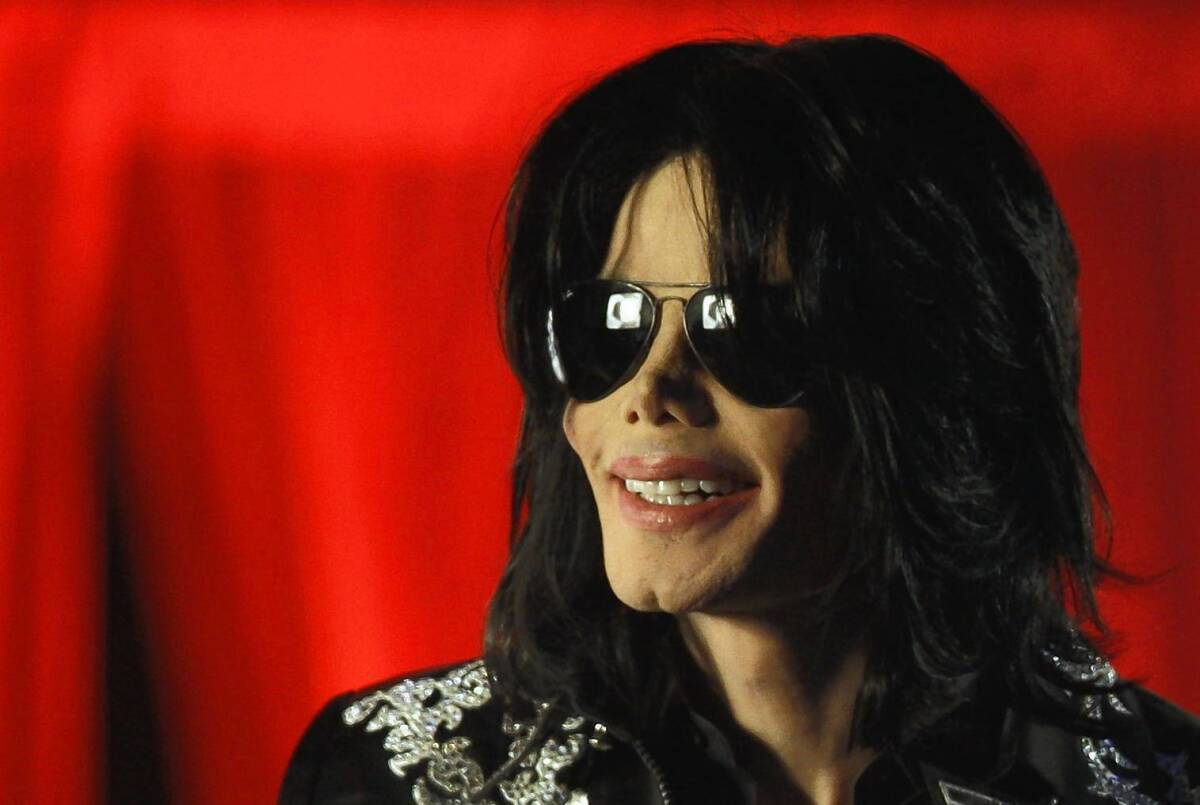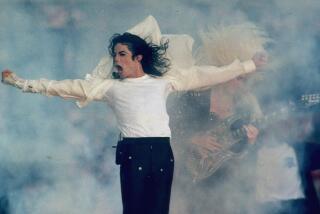Michael Jackson ‘had control of his life,’ AEG exec says in court

- Share via
At the height of his career, Michael Jackson had it all. International fame. Grammy-winning records. Unimaginable wealth.
But in the final months of his life, as the King of Pop planned his ill-fated comeback in London, one of his biggest motivators was just to make enough money to buy his own home where he could raise his children, according to testimony Wednesday.
Jackson broke down in tears as he confided that he was tired of “living like vagabonds” — shuttling his family between a Las Vegas rental and a Bel-Air hotel — said Randy Phillips, concert promoter AEG Live’s chief executive who has spent days testifying in a wrongful-death suit filed by the singer’s family. Phillips recalled an emotional Halloween meeting with Jackson at the hotel, with the pop star’s three children running in and out of the room.
“I felt incredibly bad that this incredible star was at this point where he just couldn’t buy a house with all this money he made,” Phillips testified. “It just didn’t make sense.”
Phillips said it was the “first time Michael really told me why he wanted to go back to work.”
“He actually broke down and I broke down — we both broke down,” he told the court.
In his eagerness to have a permanent address, Jackson even turned up a “gigantic,” 40,000-square-foot house with a $93-million price tag in Bel-Air. But Phillips said he told Jackson the house was too much — “you’ll put every dime you make into this house,” he recalled telling the singer.
Jackson finally settled for life as a renter, and he and his family moved into a $100,000-a-month Holmby Hills estate he paid for using a multimillion-dollar advance he received from AEG.
Phillip’s comments came on the 27th day of testimony in the case, in which Jackson’s mother and children contend AEG pushed an ailing Jackson to perform in hopes of reaping a huge return. The suit alleges the entertainment giant employed and controlled Conrad Murray, the doctor who gave the singer a fatal dose of the anesthetic propofol. AEG maintains that Murray worked for Jackson.
Phillips disputed various portrayals of Jackson, describing the singer as someone actively engaged in his comeback who knew “who he wanted to work with and how he wanted to do it” – even coming up with the name “This Is It” for the tour.
“We seem to be talking about Michael like he’s the 5-year-old singer in the Jackson 5 and he wasn’t,” Phillips said. “He was a sophisticated, very smart, articulate, 50-year-old man who had control of his life.
“He’s been presented as a drug-addled 5-year-old and that’s not the man I dealt with,” he later elaborated. “The man I dealt with was forceful, kind – but determined. And a force. He was a force.”
Jackson had a few memorable requests in the conversations about the tour, Phillips said. When Jackson and AEG officials met at the Holmby Hills home to sign their contract, Jackson double-checked with his attorneys that the agreement covered up to 31 shows at London’s O2 Arena. Prince had done 20 shows, Phillips said, and Jackson wanted to top that.
“Michael and Prince were incredibly competitive, and he wanted to beat Prince’s record by enough that Prince could never beat it again,” Phillips said.
After the tour was publicly announced, Phillips said AEG officials realized the demand for tickets was much greater than anticipated, and asked Jackson if he would be interested in upping the number of shows.
Phillips said Jackson agreed to up to 50 shows – on two conditions.
He wanted a home in the English countryside because he “didn’t want to be trapped in a hotel in London with the kids,” Phillips testified. The singer was “very clear” about the type of property he wanted — 16 acres, with rolling hills, streams, horseback riding and a separate guest house.
Phillips said he later learned Jackson had been “surfing the Internet” and had found a particular residence he wanted.
Jackson also wanted a representative from the Guinness Book of World Records on hand for the 50th show, Phillips said.
“He knew no one would ever be able to do 50 shows in an arena in one city ever again,” he said.
That was Jackson’s style, Phillips said earlier in the day, which is why they had brainstormed ideas to make the tour “larger than life.”
“For Michael, everything was about being bigger and better and larger than anything else before,” he testified.
Jackson died two weeks before the tour was supposed to begin.
More to Read
Sign up for Essential California
The most important California stories and recommendations in your inbox every morning.
You may occasionally receive promotional content from the Los Angeles Times.














